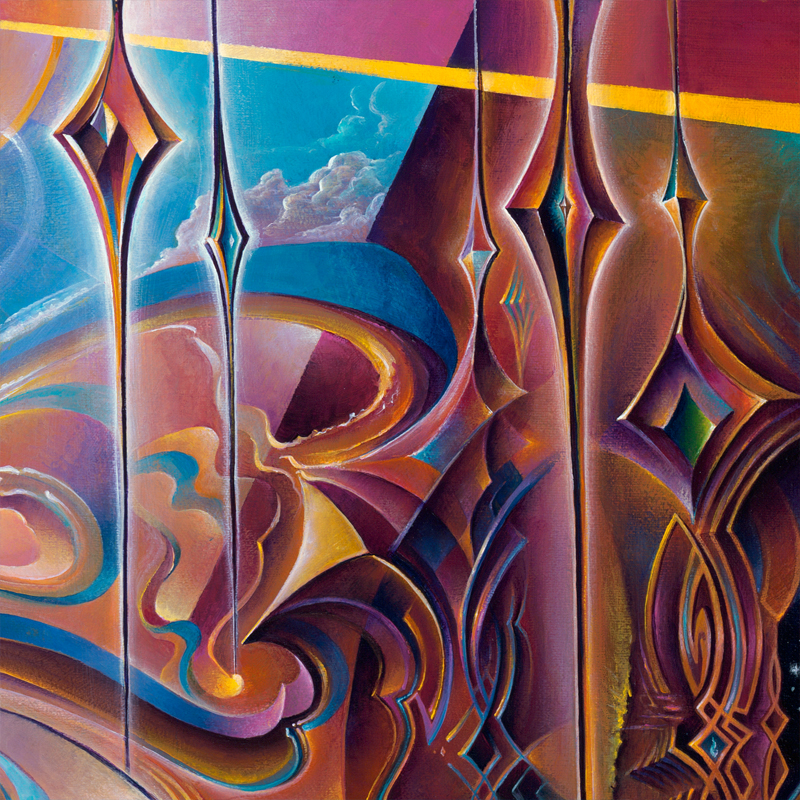
This is something I was thinking about while painting tonight. Often I leave things in my paintings rather ambiguous. Shapes are suggestive of animals or plants or clouds or structures. They are all inspired by countless things I see through the course of my days – the curve of the leaf of the plant in my garden or the arch of a cathedral I might happen upon. All of these things become part of the visual language and an artist can draw upon these shapes – even just the step of an edge or the clip of a curve – and use them to inform the work.
Now, the more you know – the more shapes and curves and lines and movements that you store in that visual memory – the more you can take your sense of ‘I don’t know what this is going to be’ and simply shape it and allow it to take form and be informed by your visual memory and the feelings evoked by the different shapes you run across. Granted, it takes some practice to allow for the space to allow that through but with effort and practice (a sketchbook helps) you might find that this comes more easily than you realized.
I think we get so caught up in things ‘being things’ that we forget to allow them to simply be what they are. Early on we get taught that if we’re going to draw a cow, it should look like a cow and so on for everything else. But it doesn’t have to be that way. All of life – it’s a huge sea of energy, moving and coalescing and taking form and we perceive it and name things and assign them a thousand responsibilities – to make us happy or sad or turned on or repulsed. Likewise, we look at our paintings and say ‘It must be SOMETHING!’ But there is a grace in following a train of thought to it’s natural finish without forcing upon it a responsibility of object specificity. In that, there is generosity, acceptance, and, ultimately, I think, joy.
Granted, if the thing is supposed to be a horse and the horse is simply not coming out right but it really should (because of the vision) be a horse, then perhaps you should spend some time sketching and drawing horses. Find the part that says what you want to say. However, the ambiguity which I speak of is really more along the lines of the places where there isn’t a horse and there isn’t a landscape and there’s simply the paint, simply the emotions we’re working with.
At that point it’s even more effort sometimes to cut out what isn’t working and to work what is. Perhaps there is a splendid line that simply doesn’t help the whole. We get so attached to our lines sometimes! That’s fine. But still… ALLOW…. Breathe space into your work… don’t force anything… be patient…
Most importantly: if you’re not sure what it is or what it is yet to be, don’t just let the mud take over – don’t just be content with a muddy composition. Commit to the ambiguity. In choosing it, sculpting it, shaping it, in all of its ambiguous beauty, you will quite possibly find some more sublime beauty and perhaps echoes of your life in ways you hadn’t imagined possible.